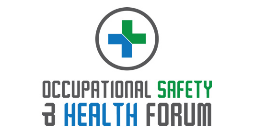New statistics from the Health and Safety Executive (HSE) highlight a disheartening stagnation in the ongoing efforts to reduce work-related fatalities in Great Britain, according to a leading Health & Safety expert.
According to the regulator’s latest report, a total of 135 workers tragically lost their lives as a result of work-related accidents between April 2022 and March 2023.
Nick Wilson, Director of Health & Safety Services at WorkNest says the safety plateau is likely caused by a combination of factors, including a culture of complacency and poor leadership.
The figure marks a regrettable increase compared to the previous year’s count of 123 fatalities. It does, however, represent a decrease from the 142 fatalities recorded in 2020/21.
Examining the raw numbers, the number of fatalities has fluctuated over the years with no clear cause. Having risen steadily year on year from 2016/17 to 2018/2019, the number of deaths decreased fairly dramatically in 2019/20, then rebounded to pre-pandemic levels in 2020/21, before dropping off again last year to below 2016 levels.
This sequence of events brings us to the present, which is a situation reminiscent of the statistics from 2016.
Nick Wilson, Director of Health & Safety Services at WorkNest, said: “The cyclic nature of these fluctuations underscores the complex and multifaceted nature of work-related fatalities. Further analysis and examination is needed to identify underlying factors and develop targeted measures to ensure sustained progress in improving workplace safety.”
Taking employment levels into account, the 135 fatalities in 2022/23 equates to a fatal injury rate of 0.41 deaths per 100,000 workers. Interestingly, this figure closely aligns with the average fatal injury rate observed over the past seven years (0.414), suggesting that 2022/23 was not characterised by any significant positive or negative deviation from the overall trend.
Wilson added: “Last year’s figure suggested progress was being made, so it’s disheartening to see that this positive downward trend in fatalities was not sustained in 2022/23.”
The highest number of work-related fatalities in 2022/23 were in construction, agriculture, forestry and fishing, and manufacturing.
Unsurprisingly, falls from height continue to be the number one cause of fatal injury at work, claiming the lives of 40 workers in 2022/23 – 30% of the total figure. This represents a 38% increase on last year’s figure (29).
In addition, 29 workers were killed after being struck by a moving (including flying/falling) object (up from 18 last year), and a further 20 died as a result of being hit by a moving vehicle (down from 23 last year).
Together, these three types of accidents consistently account for more than half of all fatal injuries to workers, a trend that has persisted since 2001/02.
Nick said: “The marked increase in falls from height is a major cause for concern. Employers must ensure that work-at-height activities are properly planned, appropriate equipment is used, and operatives are properly trained in order to mitigate this alarming trend.”
Following established trends, the overwhelming majority (96%) of those killed in work-related accidents in 2022/23 were male. Examining the age demographics, 25% of fatal injuries in 2022/23 were to workers aged 60 and over, despite such workers making up just 11% of the workforce.
Nick concluded: “Sadly, these statistics don’t come as a surprise. It is no secret that sectors like manufacturing and construction are predominantly male-dominated, explaining the higher proportion of male fatalities, and the increased vulnerability of older workers is a known reality.”
“Still, the gender and age disparities in work-related fatalities underscore the importance of addressing the unique risks faced by different demographic groups.”
“This year’s figures highlight that, over the last seven years, we have made minimal progress when it comes to driving down the number of work-related fatalities. It’s incumbent on employers, particularly those in higher risk sectors, to take their responsibilities seriously, intensify their efforts, and renew and enhance initiatives.”
Image by memyselfaneye from Pixabay







